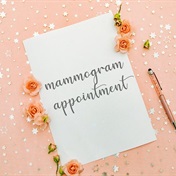
Little benefit
The study gives longer follow-up on nearly 90 000 women who had annual breast exams by a nurse to check for lumps plus a mammogram, or the nurse's breast exam alone. After more than two decades, breast cancer death rates were similar in the two groups, suggesting little benefit from mammograms.
It's important to note that this study did not compare mammograms to no screening at all, as most other research on this topic has. Many groups have not endorsed breast exams for screening because of limited evidence that they save lives.
Critics of the Canadian study also say it used outdated equipment and poor methods that made mammograms look unfairly ineffective.
The study was published in the British journal BMJ.
Read: Breast cancer: myths and facts
Overtreatment of cancers
Breast cancer is the leading type of cancer and cause of cancer deaths in women worldwide. Nearly 1.4 million new cases are diagnosed each year. Many studies have found that mammography saves lives, but how many and for what age groups is debatable. It also causes many false alarms and overtreatment of cancers never destined to become life-threatening.
In the US, a government-appointed task force that gives screening advice does not back mammograms until age 50, and then only every other year. The American Cancer Society recommends them every year starting at age 40.
Other countries screen less aggressively. In Britain, for example, mammograms are usually offered only every three years.
Canadian study pessimistic
The Canadian study has long been the most pessimistic on the value of mammograms. It initially reported that after five years of screening, 666 cancers were found among women given mammograms plus breast exams versus 524 cancers among those given the exams alone.
After 25 years of follow-up, about 500 in each group died, suggesting mammograms were not saving lives. The similarity in the death rates suggests that the 142 "extra" cancers caught by mammograms represent over diagnosis – tumours not destined to prove fatal, study leaders concluded.
The work was immediately criticised. The American College of Radiology and Society of Breast Imaging called it "an incredibly misleading analysis based on the deeply flawed and widely discredited" study. Mammograms typically find far more cancers than this study did, suggesting the quality was poor, the groups contend.
Experts speak out
In a letter posted by the medical journal, Dr Daniel Kopans, a radiologist at Harvard Medical School, described outdated machines and methods he saw in 1990, when he was one of the experts asked to review the quality of mammograms used in the study.
"I can personally attest to the fact that the quality was poor," he wrote. "To save money they used second-hand mammography machines" that gave poor images, failed to properly position breasts for imaging, and did not train radiologists on how to interpret the scans, he wrote.
Read: Preventing breast cancer
The study leader, Dr Anthony Miller of the University of Toronto, said it was "completely untrue" that inferior equipment or methods were used.
Still, the study highlights the fact that mammograms are an imperfect tool that lead to many false alarms, needless biopsies and treatment of many tumours that would never threaten a woman's life.
"Over diagnosis is not an anomaly in the study from Canada. This has been compellingly demonstrated in research from the US and Europe," said another study leader, Dr. Cornelia Baines of the University of Toronto.
Dramatic improvement in treatments
Dr H. Gilbert Welch, a professor of medicine at the Dartmouth Institute for Health Policy and Clinical Practice in New Hampshire, spoke on the issue at the San Antonio Breast Cancer Symposium in December.
"Screening is a choice, not a public health imperative. There are trade-offs here," he said.
"The people who stand to gain the most from screening are the people at greatest risk of the disease" – older women who are more likely to have breast cancer and those not too old that they are likely to die of something else, he said.
Read: How is breast cancer treated?
Death rates from breast cancer have fallen mostly because of dramatic improvement in treatments, he and other doctors have said.
"The better we are at treating clinically evident disease, the less important it becomes to find it early," Welch said.
A big caveat: The Canadian study was on routine mammograms to screen healthy women. No one doubts the value of diagnostic mammograms – more detailed X-rays when a problem is suspected or after a lump has been found.
Picture: Mammogram from Shutterstock
Read more:
Mammogram guidelines revised – again




 Publications
Publications
 Partners
Partners











